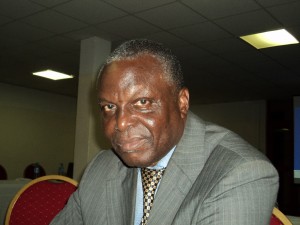The Lima Climate Change Conference (COP 20) adopted the “Lima Call for Climate Action” which sets in motion negotiations in 2015 towards an agreement and the process for submitting and reviewing Intended National Determined Contributions (INDCs) and enhancing pre-2020 ambition. It focused on outcomes under the ADP necessary to advance towards an agreement in Paris COP 21 in December, 2015 including elaboration of the information and process required for submission of INDCs as early as possible in 2015.

The Lima conference was able to lay the groundwork for Paris by capturing progress made in elaborating the elements of a draft negotiating text for2015 agreement and adopting a decision on INDCs including their scope, upfront information and steps to be taken by the Secretariat after their submission.
It is recalled that the sessional meeting of the UNFCCC in Geneva in February came up with the negotiation text for the Paris meeting in December 2015. It is useful to state that one of the key aims of UNFCCC is stabilising the greenhouse gas emissions (carbon dioxide and other anthropogenic greenhouse gases). The Kyoto Protocol sets emission targets for developed countries which are binding under international law. The Kyoto Protocol has had two commitments periods, the first which was from 2005-2012 and the second, 2012-2020. All Annex l Parties excluding the US have participated in the 1st Kyoto Protocol commitment period, 37 Annex I countries and the EU have agreed to the second round of Kyoto targets. There are some countries that have not taken on new targets in the second commitment while some have withdrawn from the Kyoto Protocol since 2012.
Switzerland in February 2015 became the first country to submit its INDC. It is expected that other countries will follow her leadership role in time to assist the Secretariat to be able to put all together as this will be one of the useful documents in the negotiation for the new climate agreement that will come into operation in 2020. It is expected that the agreement is to ensure that the global temperature is under 2 degree C.
The COP 19 in its decision invited all parties to initiate or intensify domestic preparation for their INDCs in advance of COP 21 in a manner that facilitates the clarity, transparency and undertaking of the INDC. The information to be provided by the Parties in the INDC may include as appropriate quantifiable information on the reference point including the base year, time frames and/or period for implementation, scope, coverage planning processes, assumptions and methodological approaches including those for estimating and accounting for anthropogenic greenhouse gas emissions and as appropriate, removals and how the Party considers that its INDC contribution is fair and ambitious in the light of its national circumstances and how it contributes towards achieving the objective of the Convention.
The Parties are expected to communicate the INDCs according to INDCs communication process in a manner that facilitates the clarity, transparency and understanding of the INDCs. The Secretariat is expected to prepare by 1st November, 2015 a synthesis report on the aggregate effect of all INDCs communicated by the Parties by October 2015. It is useful to know that Switzerland has set a target to reduce its greenhouse gas emissions by 50 per cent by 2030. It is expected to do this through projects in Switzerland and also by projects abroad. The implications of this is that the Swiss are targeting their investments abroad to low carbon oriented projects. It is most likely that other countries will follow this path and that means that there will be paradigm shift in global investments that requires change in the processes and other skills. It is my view that building capacities, acquiring new knowledge, new technology and finance are necessary ingredients to address the challenges. I hasten to guess that this will be one of the issues to be on the table as we progress in the future matter.
Nigeria must address not only the INDC matter but the pathway to low carbon economy. I know we are locked in on the political matters; however, very soon, that should be out of the way and we must devote time to take the bull by the horn and face the new direction of sustainable way that will have an effect on our livelihood – energy, agriculture, forestry, health, education, job generation, unemployment and human capital development.
We must take appropriate steps to engage our people, develop collaborations and partnership by all of us – government, private sector and civil society. It is the overall interest of the people that should be paramount.
The time to seek the moves beyond oil is here with us and the collective effort of all of us and the support of our development partners and friends of Nigeria to assist us in the way we approach the challenges and opportunities of climate change should be given high priority.
We must remember that the agreement to cut the global emission to 2 degree C in Paris in December is for all parties and we must put machinery in place to be actively involved in the process. The COP 21 is not only for negotiation, we must put machinery in place to look for how we can benefit from the network and other ways of sharing experience and knowledge.
By Prince Lekan Fadina (Executive Director, Centre for Investment, Sustainable Development, Management and Environment (CISME). (He is a member of the Nigeria Negotiation Team, Africa Group of Negotiators and member, AGN Finance Co-ordination Committee). Website: www.cismenigeria.com. Email: cismevision@gmail.com
